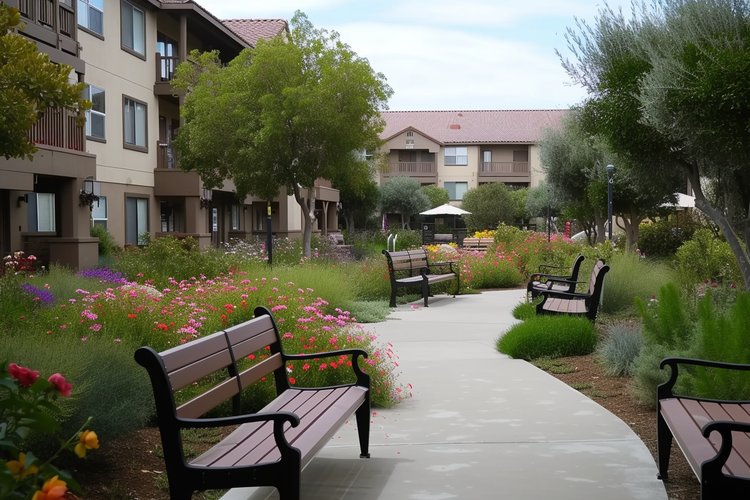Whisper Gardens: The Silent Revolution in Urban Soundscapes
Imagine stepping into your backyard, surrounded by lush greenery that not only pleases the eye but also soothes the ear. Welcome to the world of whisper gardens, a groundbreaking approach to landscaping that's transforming urban environments into tranquil havens. This innovative concept marries horticulture with acoustic engineering, creating spaces that actively reduce noise pollution while enhancing natural beauty.

Initially, whisper gardens were experimental installations in public parks, designed to test the efficacy of various plant species and landscaping techniques in sound absorption. The results were astounding, with some gardens reducing ambient noise levels by up to 10 decibels – a significant drop that can make the difference between a noisy environment and a peaceful one.
The Science Behind the Serenity
At the heart of whisper gardens lies a sophisticated understanding of how sound waves interact with different materials and surfaces. Dense foliage, particularly plants with large, waxy leaves, act as natural sound barriers, absorbing and deflecting sound waves. But whisper gardens go beyond mere plant selection.
Landscape designers incorporate specific topographical features like berms, sunken areas, and strategically placed water features to further manipulate sound waves. The shape and arrangement of these elements can redirect sound upwards or create pockets of quietude within the garden.
Moreover, the use of sound-absorbing materials in pathways and structures complements the natural elements. Porous paving materials, for instance, can significantly reduce sound reflection compared to traditional concrete or asphalt.
Designing Your Own Whisper Garden
Creating a whisper garden at home doesn’t require a complete overhaul of your existing landscape. Start by assessing your space and identifying the primary sources of noise. This could be traffic from a nearby road, noisy neighbors, or urban activity.
Next, consider the plant palette. Dense evergreens like holly or arborvitae make excellent year-round sound barriers. For a more diverse look, layer different plants with varying leaf sizes and textures. Bamboo, with its dense growth and flexible stalks, is particularly effective at dampening sound.
Incorporate vertical elements like living walls or trellises covered in climbing plants. These not only add visual interest but also increase the sound-absorbing surface area. Water features, when properly designed, can mask unwanted noise with their soothing sounds.
Don’t forget about the ground cover. Soft, porous surfaces like mulch or groundcover plants absorb sound better than hard surfaces. Consider replacing parts of your lawn with these alternatives for enhanced acoustic performance.
The Multisensory Experience of Whisper Gardens
While the primary focus of whisper gardens is auditory, they offer a rich multisensory experience. The careful selection of plants not only reduces noise but also creates a visually stunning environment. Fragrant plants like lavender or jasmine add an olfactory dimension, further enhancing the sense of tranquility.
Tactile elements play a crucial role too. Incorporating different textures – from smooth river stones to rough tree bark – invites interaction and grounding. This multisensory approach helps create a more immersive and relaxing environment, amplifying the stress-reducing benefits of the garden.
Whisper Gardens in Public Spaces
The concept of whisper gardens is gaining traction in urban planning and public space design. Cities are increasingly incorporating these principles into parks, urban squares, and even roadside landscaping. In some innovative projects, whisper garden principles are being applied to create quiet zones in bustling city centers, offering urbanites pockets of tranquility amidst the chaos.
Educational institutions are also embracing this trend, creating outdoor learning spaces that promote focus and reduce distractions. These gardens serve a dual purpose – enhancing the aesthetic appeal of campuses while providing students with quiet areas for study and reflection.
The Future of Urban Soundscapes
As our cities continue to grow and evolve, the importance of managing urban soundscapes becomes increasingly critical. Whisper gardens represent a promising solution, offering a harmonious blend of nature and technology to combat noise pollution.
Looking ahead, we can expect to see more integration of smart technologies in whisper garden design. Imagine gardens that adapt to changing noise levels throughout the day, with automated systems adjusting water flow or activating sound-masking features as needed.
The potential applications extend beyond residential and public spaces. Whisper gardens could be incorporated into office buildings, creating green buffer zones that enhance employee well-being and productivity. In healthcare settings, these gardens could contribute to faster patient recovery by providing a serene environment.
Embracing the Quiet Revolution
Whisper gardens are more than just a landscaping trend; they represent a shift in how we think about our living spaces and our relationship with sound. By consciously designing our environments to promote acoustic comfort, we’re not just creating prettier spaces – we’re enhancing our quality of life.
As we move forward, the principles of whisper gardens are likely to influence broader urban design strategies. From noise-reducing building materials to city-wide acoustic mapping, the quest for urban tranquility is just beginning. The whisper garden concept serves as a reminder that sometimes, the most powerful innovations come not from adding more to our environment, but from thoughtfully taking away – in this case, unwanted noise.
In a world that often seems overwhelmingly loud, whisper gardens offer a path to peace, one leaf at a time. They invite us to listen more closely to the subtle sounds of nature and to find harmony in the spaces we inhabit. As this quiet revolution spreads, it promises to transform our urban landscapes into oases of calm, where the whisper of leaves and the gentle trickle of water replace the cacophony of city life.





